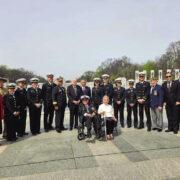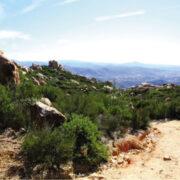EVERY place I have ever been to is made significant by the images and thoughts I have of people, places and experiences that still live on in my memory. For Mindoro, it’s memories of my father, this place called Naujan and sizzling hot summer days.
Time can dull memories and I wasn’t ready to let go of the past. Not until I’ve come full circle. I was determined to see this place one more time to rekindle the memories of glorious summers spent as a pint-sized tot from Manila gamboling about like a frisky, wet puppy, with my sisters and first cousins in the beaches of Kanipisan and Aplaya — happy, carefree, innocent, idyllic days of sun, sand, sea and simple pleasures of drinking clear coconut juice straight out of its shell and with a teaspoon in one hand, scraping off the sides of the young nut, called malauhog by locals, for its young coconut flesh, resembling the consistency of early stage, transparent phlegm. Alright. Ewwwww. But not when you’re young, still unpretentious and really hungry.
We visited my father’s only surviving sister at the time, Tia Luz and only surviving brother, Tio Oscar. Both have passed away since then.
Tio Oscar was an entrepreneur cum wanna-be inventor who tried his hand at many things like being the proud impresario of a bedbug-infested theater, the owner of a dine-in/take-out restaurant serving its specialty, banana-leaf wrapped pancit from hand-made noodles or helping capture crocodiles in the swamps and selling its skins to Saldana.
Mostly I remember him for his pure sense of fun. He had an old, rickety open-topped, World War II vintage weapons carrier, heavy-duty truck which he would use to haul blocks of ice coated with ipa (rice husks) to prevent it from melting for the hot, dusty trip between Calapan and the only restaurant in Naujan, which he and his wife Tia Celia, owned and operated at the time. Electricity was miserly meted out from 6 in the evening till 6 in the morning, that is, when the generators were working. The ice hauled from Calapan would chill Tio Oscar’s stash of soft drinks (called soda or pop in other places) in a cooler during the day and he would use the rest for the crushed ice of the best halo-halo in town, so scrumptiously delicious, it would entice barefoot hordes of Mangyans to come down from the mountains and give themselves the cool treat.
His chores done, he would then haul all of us, a ragtag band of scrawny, eager-beaver kids, off to the beach. If we weren’t swimming or eating, we simply bummed around looking for shells or digging for clams. We would mow down grilled fish, tulingan, halabos na hipon and steaming rice mixed with raw eggs complimented by chopped pajo, red eggs and tomatoes.
A side note on Pajo: It is a tiny, green, flavorful mango-shaped vegetable (or fruit or herb, who knows) with a distinctive taste similar to dill, perfectly paired with fish dishes and perhaps, appealing only to the taste buds of Batanguenos and Mindorenos who have a hankering for it.)
With our tiny, grubby hands, we molded black sand sculptures which killjoy waves promptly crushed and swept back out to sea. In the early mornings, we would be kibitzing and swarming about like pesky flies at the abundant haul of fishermen pulling in their nets bursting with their catch of the day from the sea.
Life was good.
Those days have ebbed and are gone forever but pure joy flows back with remembrance. I wanted to revisit the former site of my grandparent’s old place in the center of town where my father was born in 1912. Grandpa was town treasurer back in the day when it was a position of absolute trust.
Papa was proud of being a Naujeno even when he lived in the US after retirement. While living in Glendale, California in his mid-eighties, he always looked forward to dressing to the nines in a tuxedo, and tripping the light fantastic whirling about on the dance floor with my mother or his daughters for the Naujeno Annual Ball in some posh Los Angeles hotel, half a world away from the place he loved.
He may have wanted to reconnect with a few remaining old timers, people he had common ties with while growing up. But mostly during his last years, he was simply happy and content being home. If he had the chance however, he would have wanted to visit the place where he grew up —just one more time— before sudden death on a dreary and cold winter’s day overtook him.
I went in his stead some time ago, something I had planned on doing, as a quiet tribute. For my part, I wanted to understand how such a place shaped who he is and what moved him to sail the seven seas for 40 years as a ship captain, hauling logs and cars and tons of containers from port to port— from Siberia to South Africa, from Pusan to Peru— bringing with him my mother’s keepsake, a small image of the Nuestra Senora de Antipolo, before the wanderlust gave out at retirement. He would have been surprised with the changes in his old hometown.
(To be continued in next week’s issue.)
* * *
The opinions, beliefs and viewpoints expressed by the author do not necessarily reflect the opinions, beliefs and viewpoints of the Asian Journal, its management, editorial board and staff.
* * *
Nota Bene: Monette Adeva Maglaya is SVP of Asian Journal Publications, Inc. To send comments, e-mail monette.maglaya@asianjournalinc.








